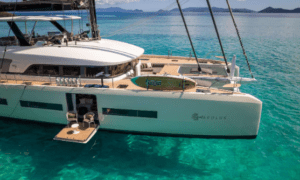1. Decide on the concept and style, then the theme.
Start with the initial concept and work towards the design if you’re only beginning. A traditional Italian idea of design for a restaurant is likely to include white and red checkered tablecloths and rustic walls. Contrastingly, Chinese restaurant design concepts could emphasize simplicity, minimalism, and exotic touches.
The design of cafes can vary from traditional to trendy or have a distinctive design, such as a cat-themed cafe, a cafe with a theme of a movie, or even a cafe that also functions as a bike repair shop. There are plenty of designs for the interiors of restaurants; There is no limit to what you can do.
2. Make an impact with a captivating entrance
If you count on the number of people who walk through your restaurant as your primary customers, you must at least draw them in. What better way to draw them in than by creating a unique front door design for your restaurant? Your restaurant’s front doors will shine by incorporating these ideas for designing the facade of your restaurant:
3. Pick colors carefully
Colors are highly effective at transmitting various emotions. We’re not saying that you’ll be able to manipulate customers to buy more through colors. However, trying to push them to the side can’t harm them.
The most appropriate colors for walls in restaurants are those with shades of red, brown, orange, green, blue, yellow, and purple. They may appear to be every color; however, it’s all about how you apply and mix the colors.
A restaurant with a refined dining design will benefit from earthy tones, such as deep reds or browns. You’ll want to encourage your guests to unwind, remain for as long as they like, and order food, desserts, and a complimentary beverage.
4. Focus on your restaurant design layout
The design in a restaurant’s design is crucial, not just from an aesthetic point of view but also from a practical point of view. You need to maximize your space, especially when you have a small restaurant design. Therefore, let’s look at the seating arrangement in a restaurant. You can ask yourself these questions:
Do you wish to create an inviting atmosphere by placing the tables together, or do you want the restaurant to appear larger?
5. Don’t ignore HVAC
The interior decor of a restaurant can be fun, but there are other “boring” restaurant design considerations to consider in addition, such as HVAC. HVAC is the term used to describe heating, ventilation, air conditioning, heating and cooling, and the services you must provide in your restaurant.
In the summer heat, be sure that customers can go to your restaurant’s relaxed environment. You can warm their hands on cold winter nights by offering a hot cup of chocolate and good heating. It is also important to note how crucial ventilation is in keeping the smell of the kitchen area from entering the seating site.
6. Create a stunning menu that is a reflection of your brand
Tips for designing a restaurant shouldn’t be only limited to the interior or decoration. The design of menus for restaurants is a vital element of the restaurant’s architecture. It’s more than an itemized list of food items that you offer. It reveals to customers the essence of your brand, what it’s all regarding, your perspective on food, and the services you offer. This is why an effective restaurant logo representing your brand’s identity is vital.
7. Make use of lighting to create an atmosphere
One of the most essential concerns to consider when planning the interior of a restaurant is the method of lighting it. Lighting can create a mood in a way that nothing other thing can. When designing the interior for a restaurant that aims to serve the maximum number of customers daily, think about red lighting. It functions similarly to red paint, creating hunger and speeding up eating.
If you’re looking for a romantic ambiance with candles, adding candles for indirect lighting is an excellent restaurant decor idea. A smaller restaurant could benefit from dim lighting for a more comfortable and intimate setting. Play around with lighting options to return to basic design principles for restaurant designs.
8. A sultry scent and fashion that is irresistible
A sense of smell is another that to be able to capitalize on while looking at restaurant design concepts. Scented candles can serve as lighting or perfume. However, you should be careful not to allow the scent to be overwhelming. As food is brought in, the aroma must be overwhelming the guests.
However, the smell of cooked food when you walk into a restaurant is a highly unpleasant experience. This is why you should have ventilation to keep the scents from your seating area.
If you run an establishment that sells coffee and you have a coffee shop, the scent of freshly ground beans is sure to draw customers. To create that scent, consider buying a coffee maker with a grinder to ensure the coffee tastes and smells fresh.
9. Make use of ambient music and music to change the atmosphere
A restaurant isn’t only about appearance and smell; it’s also about how we feel. When you are learning to create a restaurant, think about how you can draw customers with sound. For starters, If you plan to play music in the restaurant, do it quietly so as not to disturb the patrons. Second, pick a piece according to the food you serve or the concept.
If you are experiencing tranquil days or hours in the morning, you can try playing the background noise of a crowded restaurant outdoors. The people passing by will be aware of it and may decide to stop by for a bite to enjoy at your establishment. One last tip for you to play songs in your bathroom, too. The people will feel more at ease in a space like this rather than being surrounded by silence.



































